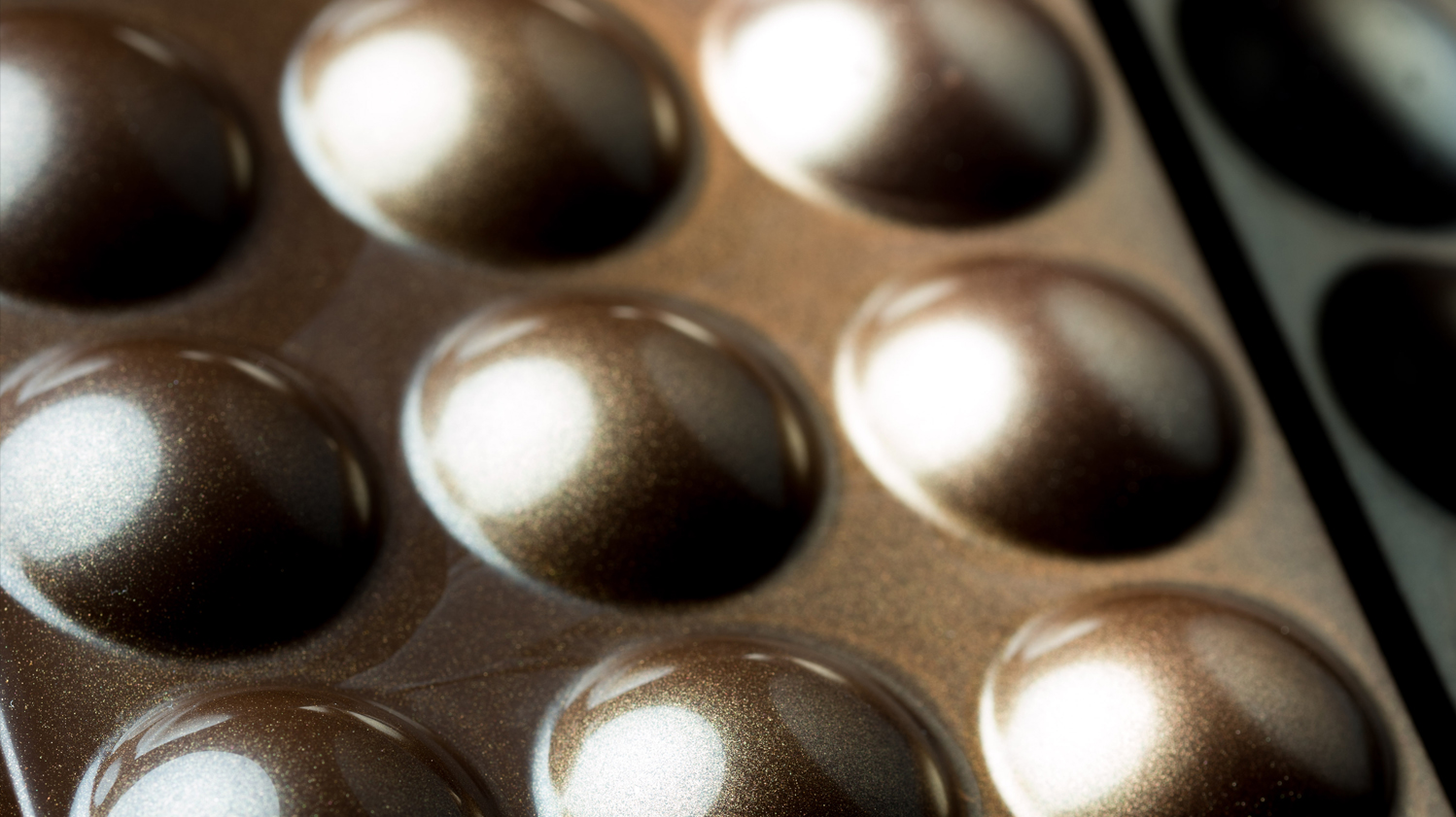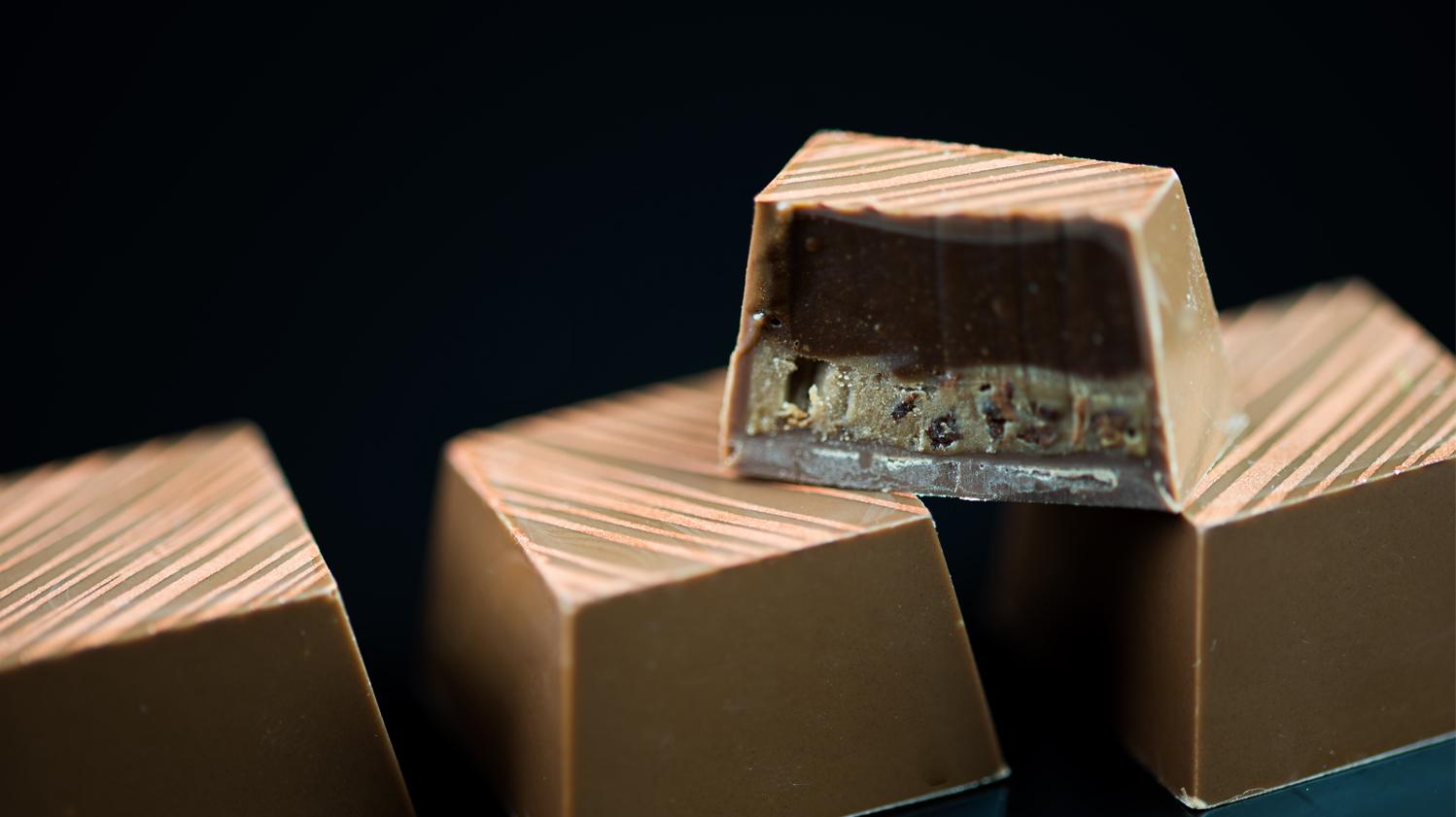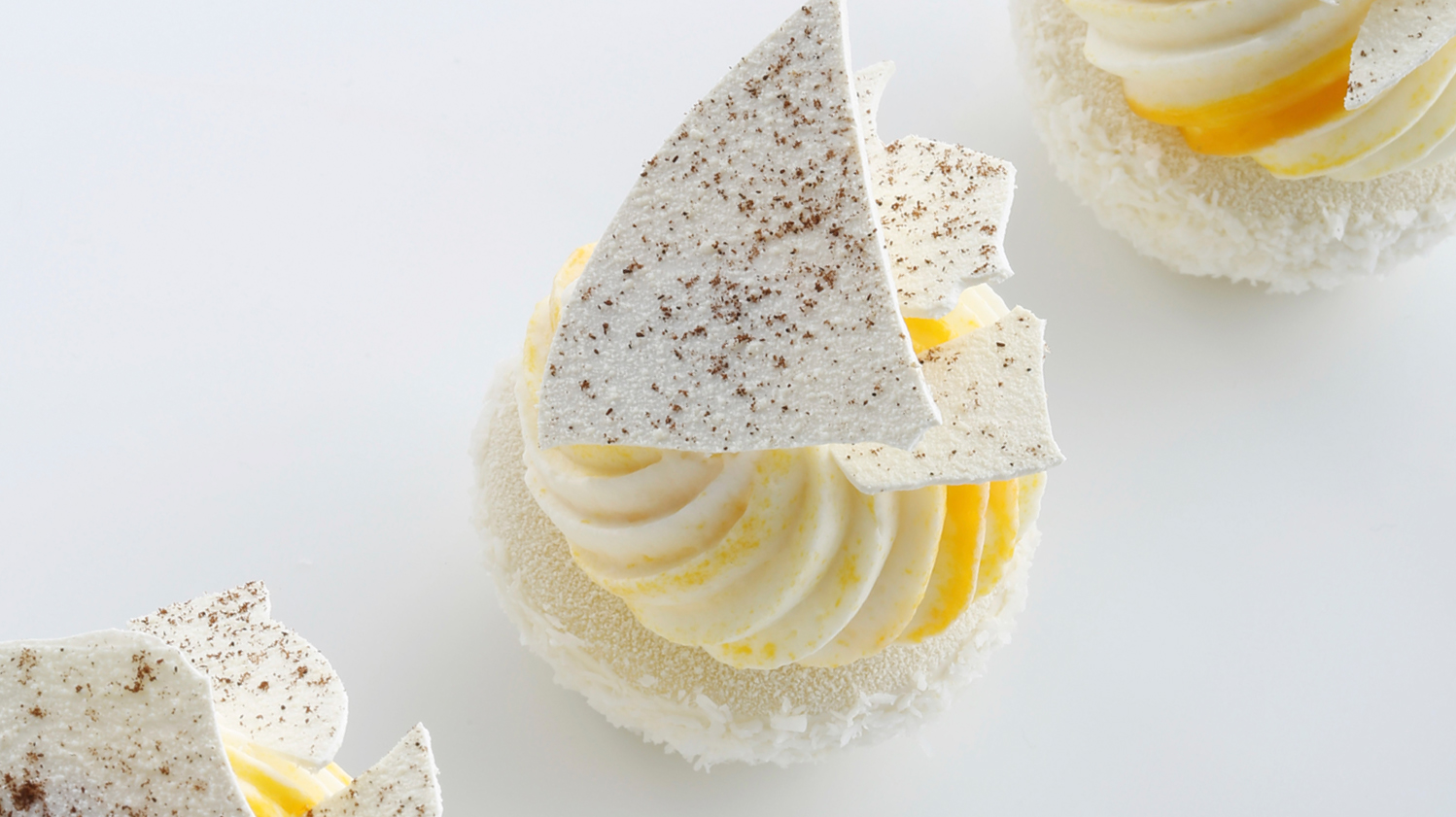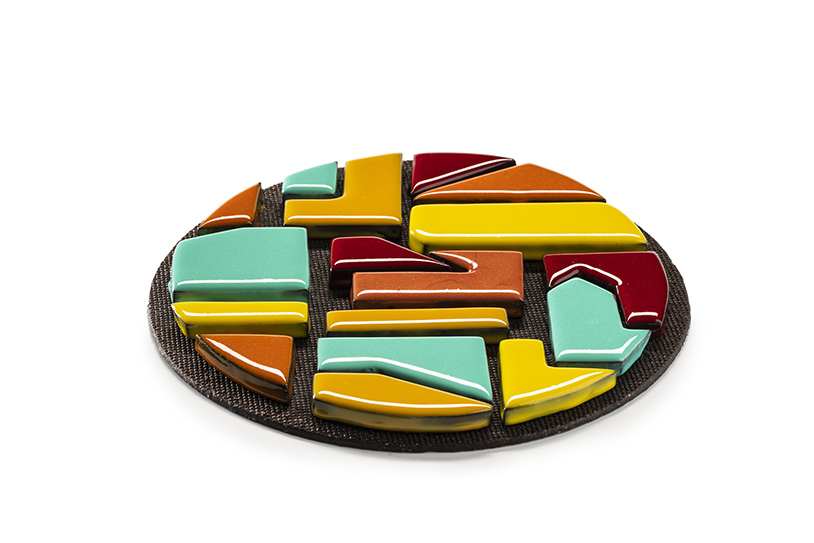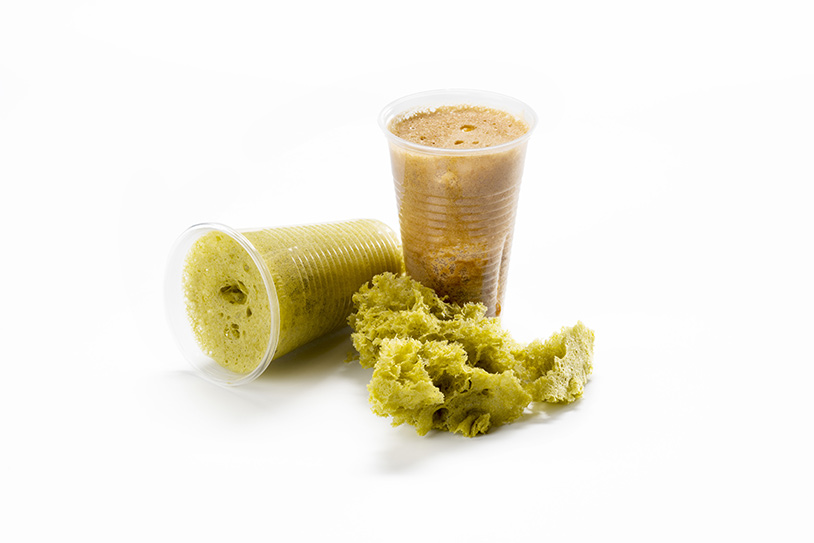Parmesan Hazelnut bonbon
Recipe
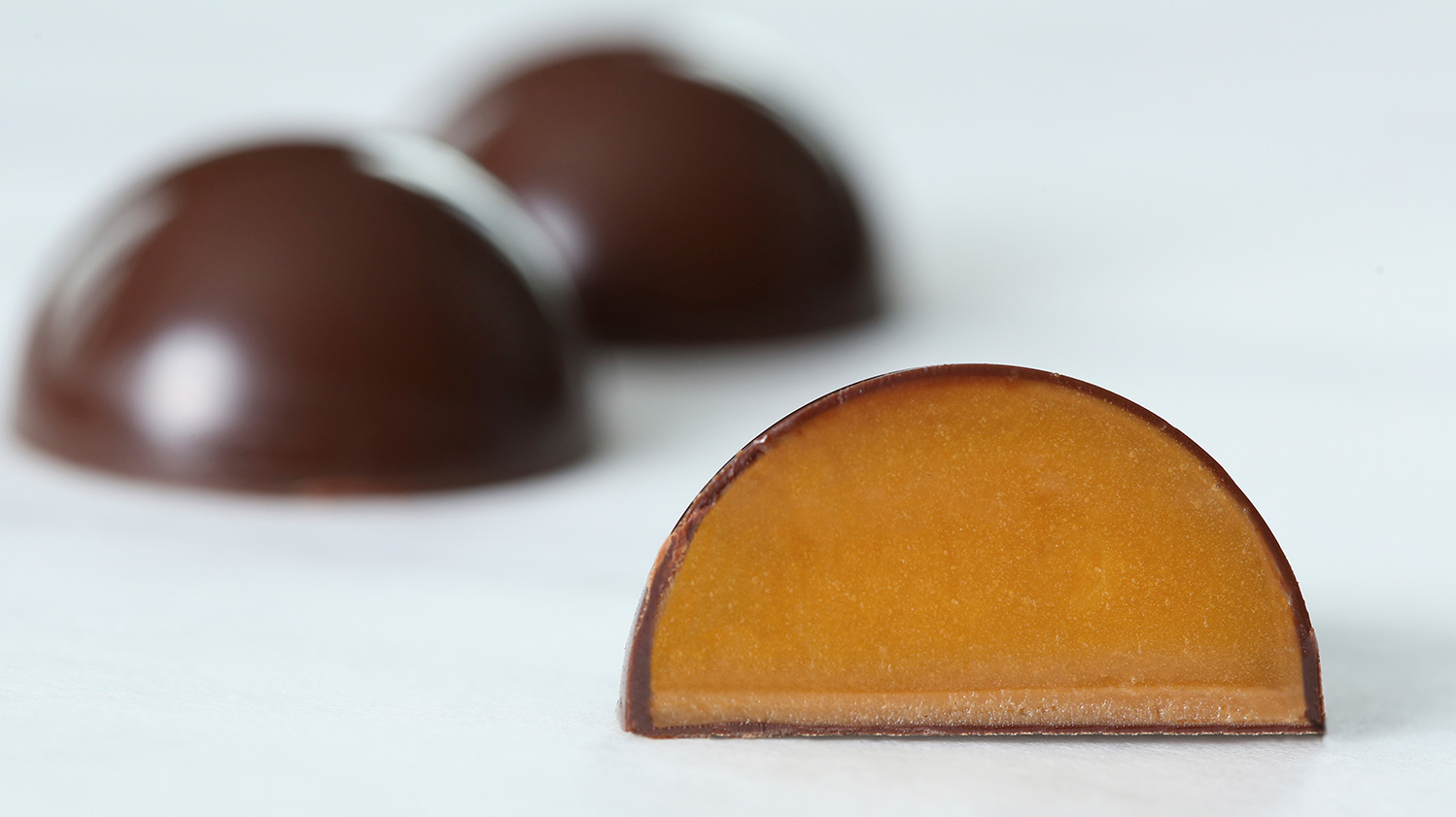
Parmesan ganache
| ingredients | preparation |
|---|---|
|
Cut large chunks from the piece of parmesan. |
Salty hazelnut duja
| ingredients | preparation |
|---|---|
|
In a bowl, mix hazelnut paste with sea salt & melted cocoa butter. |
Decor
Start with very clean molds. |
Assembly
Either temper the hazelnut duja on a granite slab or use the seeding method with tempered Cacao Barry Lactée Barry Équilibre 36% milk chocolate. |
TECHNICAL TIPS: Choosing the correct elements
No one talks about this, but in my opinion, a big part of a bonbon’s success is finding the right ratio between couverture shells and the filling. Picking the right mold and the right couverture is as important as finding a good recipe. PICKING THE MOLDS In a small mold, we will have a lot more chocolate versus filling. That being said, a small mold requires a really strong flavor filling. Otherwise, all we are going to taste is the couverture of the shell. On the other hand, if we want to have several texture in one bonbon, it is always better to use a bigger bonbon mold. It will otherwise be impossible to taste all the different components. PICKING THE COUVERTURE: When it comes to picking the couverture there are two things to take into consideration. |

